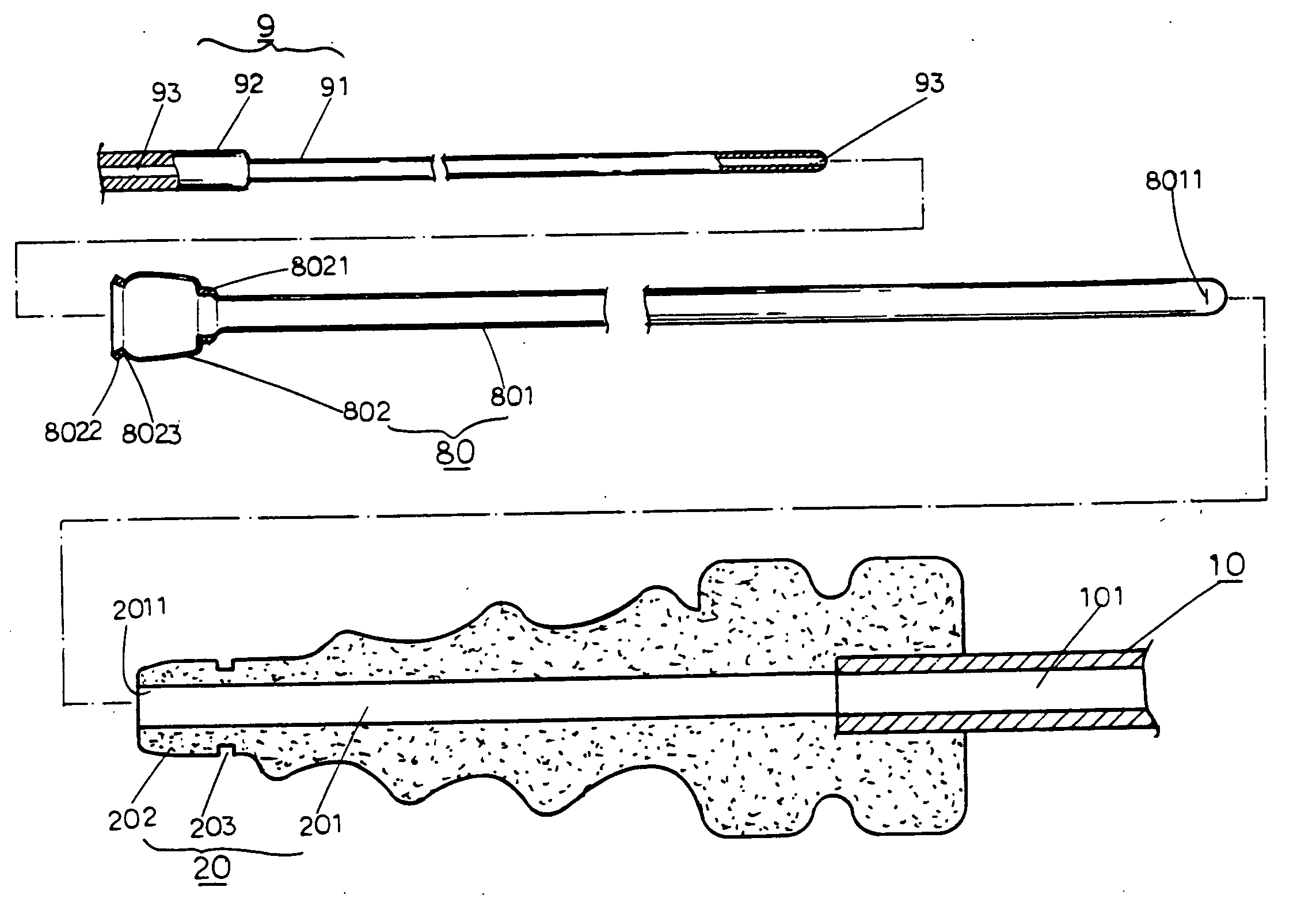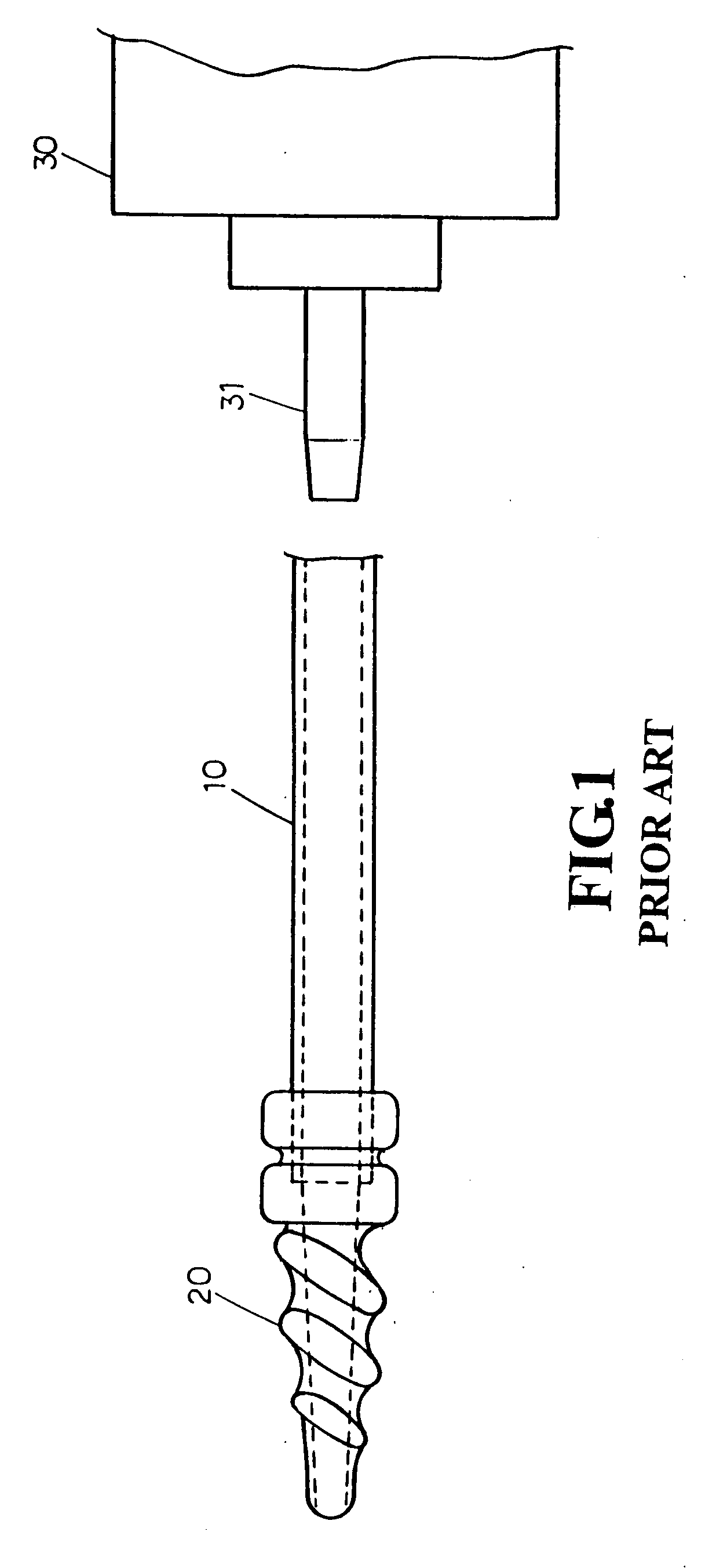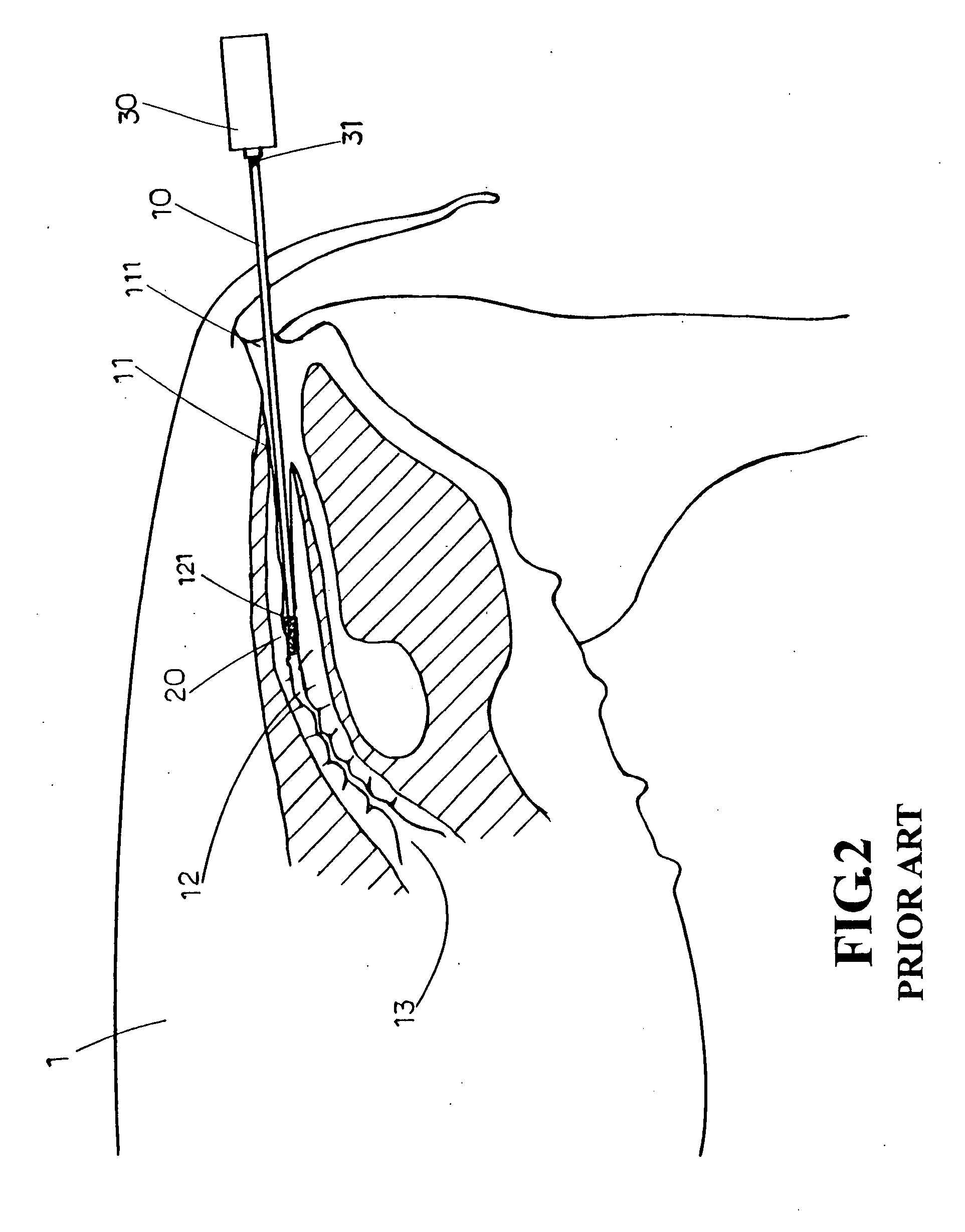Artificial insemination device for animals
a technology animal, which is applied in the field of artificial insemination device for animals, can solve the problems of reducing the rate of fertilization and the number of fetuses, the risk of bacteria infection and inflammation of the vagina, the cervical tract, and even the uterus of the animal, and the safety of fetus carried in the uterus
- Summary
- Abstract
- Description
- Claims
- Application Information
AI Technical Summary
Benefits of technology
Problems solved by technology
Method used
Image
Examples
Embodiment Construction
[0041] As show in FIG. 8, the artificial insemination device for animals according to the invention features an elastic insemination sheath 80 amassed in compressed state between the forward portion of center orifice 101 of catheter tube 10 and the passage 201 of nozzle 20, and the rear end of said elastic insemination sheath 80 is secured to the front part of nozzle 20. That is, as shown in FIGS. 9, 10, 11, 12, and 13, the elastic insemination sheath 80 is a membrane-like sheath made of balloon or condom material such that it possesses softness and elastic stretch characteristics and comprising an extension member 801 and a strap member 802. The extension member 801 has an elongated shape with slits juxtaposing along the two sides of its front end; the strap member 802 is bigger than extension member 801 with a small, thicker and more rigid neck ring 8021 in the front connected to the extension member 801 and a thicker strap ring 8022 at the back. A strap edge 8023 that tapers towa...
PUM
 Login to view more
Login to view more Abstract
Description
Claims
Application Information
 Login to view more
Login to view more - R&D Engineer
- R&D Manager
- IP Professional
- Industry Leading Data Capabilities
- Powerful AI technology
- Patent DNA Extraction
Browse by: Latest US Patents, China's latest patents, Technical Efficacy Thesaurus, Application Domain, Technology Topic.
© 2024 PatSnap. All rights reserved.Legal|Privacy policy|Modern Slavery Act Transparency Statement|Sitemap



